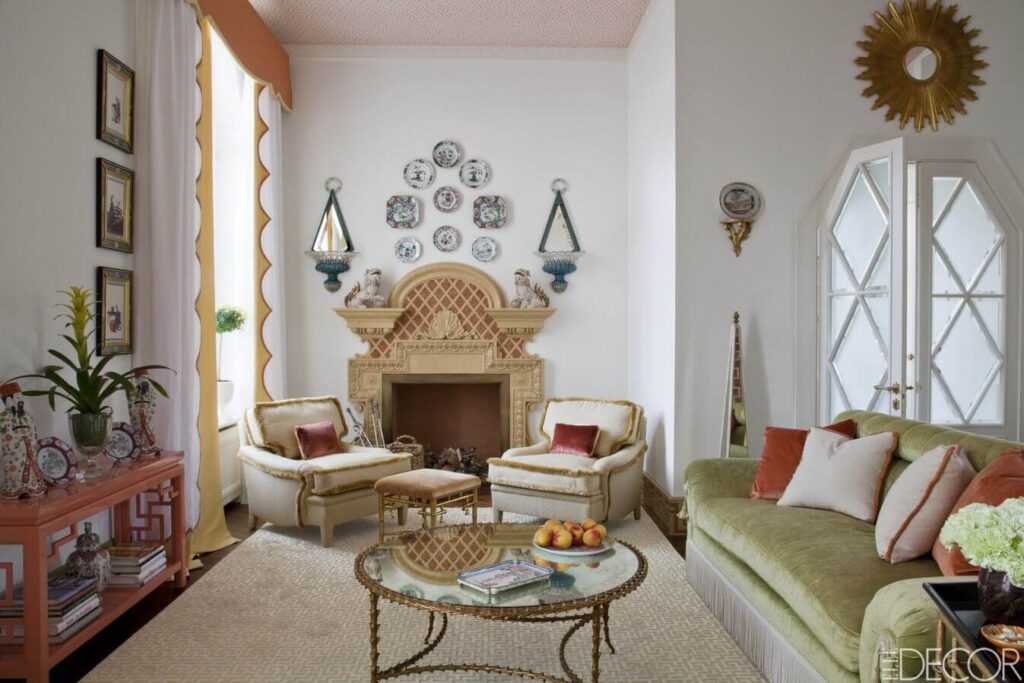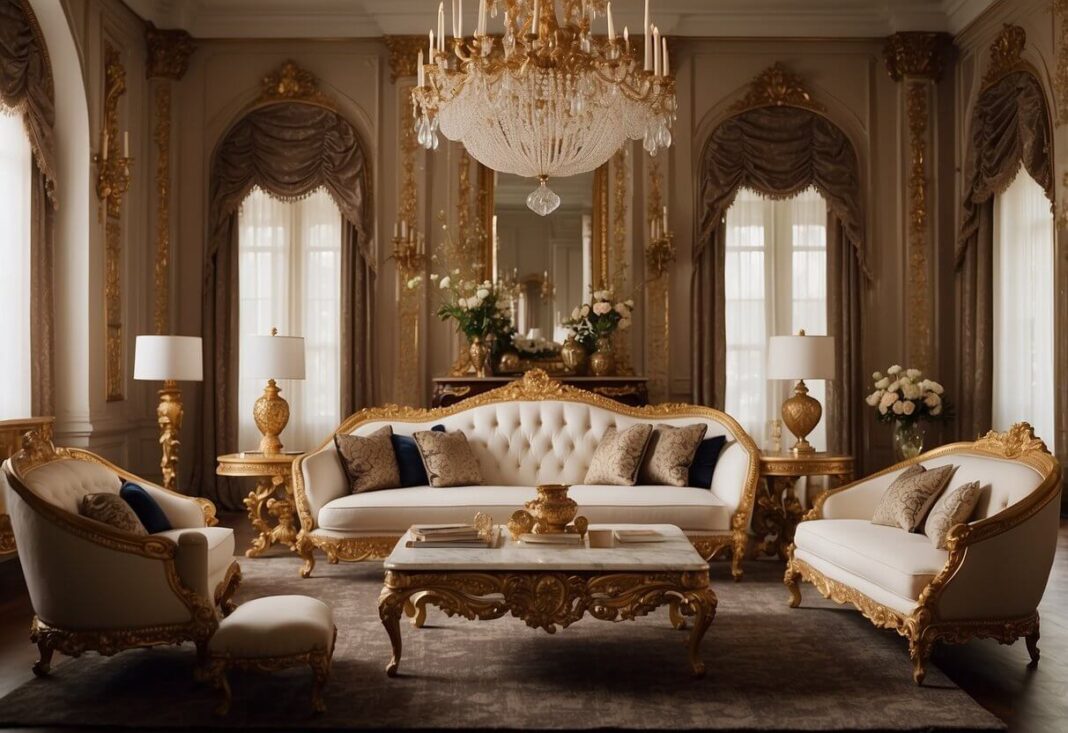Catherine the Great, Empress of Russia from 1762 until her death in 1796, left an indelible mark not only on the political and cultural landscape of her era but also on the world of art and interior design. Renowned for her patronage of the arts and her enlightened approach to governance, Catherine’s reign saw a flourishing of creativity and innovation in various fields, including furniture design. This article explores Catherine the Great’s influence on furniture and interior design, examining the styles, trends, and lasting legacy she left behind.
1. Historical Context and Catherine’s Vision
Catherine’s ascension to power marked a pivotal moment in Russian history. A patron of the Enlightenment, she sought to modernize and Westernize Russia, importing ideas and cultural influences from across Europe. This period of cultural exchange had a profound impact on Russian art and design, including furniture.
2. The Rococo Influence
One of the dominant styles during Catherine’s reign was Rococo, characterized by its ornate and playful aesthetics. Rococo furniture was known for its intricate carvings, sinuous curves, and rich gilding, reflecting the opulence and elegance favored by the aristocracy of the time. Catherine embraced Rococo not only as a decorative style but also as a symbol of her power and refined taste.
3. The Rise of Neoclassicism
As Catherine’s reign progressed, there was a gradual shift towards Neoclassicism, a style inspired by the classical art and architecture of ancient Greece and Rome. This shift was part of a broader movement towards rationality and simplicity in design, reflecting the ideals of the Enlightenment. Neoclassical furniture featured straight lines, geometric shapes, and a focus on symmetry and proportion, in contrast to the elaborate forms of Rococo.
4. The Hermitage and Catherine’s Collections
Central to Catherine’s cultural legacy was the Hermitage Museum in St. Petersburg, which she founded in 1764. The Hermitage not only served as a repository for an extensive collection of art but also housed a remarkable array of furniture from Catherine’s personal collection. These pieces, acquired from across Europe, showcased the diversity of styles and influences that characterized her reign.
5. Catherine’s Patronage of Artisans
Catherine’s patronage extended beyond collecting existing works to actively supporting artisans and craftsmen. She invited skilled furniture makers and designers from Europe to Russia, fostering a vibrant artistic community. This exchange of expertise contributed to the development of a distinctive Russian style that blended European influences with local traditions.
6. Iconic Furniture Pieces
Several iconic furniture pieces from Catherine’s era have survived to this day, providing a glimpse into the opulence and craftsmanship of the time. Examples include elaborately carved chairs, gilded mirrors, and intricately inlaid tables. Each piece not only served a functional purpose but also served as a status symbol, demonstrating the wealth and taste of its owner.
7. Legacy and Influence
Catherine the Great’s influence on furniture and interior design extended far beyond her lifetime. Her promotion of the arts and culture laid the groundwork for future developments in Russian design. The blending of Rococo and Neoclassical styles during her reign influenced subsequent generations of designers, leaving an enduring legacy that continues to resonate in the world of art and design today.
8. The Hermitage as a Showcase of Catherine’s Taste
The Hermitage Museum not only served as a repository for Catherine’s extensive art collection but also functioned as a showcase of her refined taste in furniture and interior design. The museum, originally constructed as a private retreat within the Winter Palace complex in St. Petersburg, was expanded over the years to accommodate Catherine’s growing collections. It became a testament to her patronage of the arts and her desire to create a cultural center that rivaled the great European courts.
Within the halls of the Hermitage, visitors can still admire rooms furnished according to the styles favored by Catherine. The opulent decor of the Catherine Palace in Tsarskoye Selo (Pushkin), another of her residences, further illustrates her dedication to creating luxurious and aesthetically pleasing environments. These spaces were meticulously designed to impress visitors and reflect the grandeur of the Russian Empire under her rule.
9. Catherine’s Personal Influence on Design

Beyond her role as a patron and collector, Catherine the Great’s personal taste and preferences significantly shaped the direction of furniture and interior design during her reign. Known for her intellect and sophistication, Catherine was actively involved in the selection and commissioning of furniture pieces for her palaces. Her decisions often reflected not only the prevailing styles of the time but also her own eclectic tastes, which combined elements of European elegance with a distinct Russian flair.
Catherine’s interest in interior design extended beyond mere decoration; she viewed it as a means of projecting power and cultural refinement. This perspective influenced her decisions regarding the layout and decoration of her residences, ensuring that they served as impressive symbols of her reign. The strategic placement of furniture, the use of sumptuous fabrics, and the integration of artistic masterpieces into the decor all contributed to the overall ambiance of luxury and sophistication that characterized Catherine’s court.
10. The Artisan Community in Catherine’s Russia
Under Catherine’s patronage, Russia experienced a flourishing of artistic and artisanal talent. Skilled craftsmen from across Europe were invited to Russia, bringing with them new techniques and design ideas. This exchange of expertise resulted in a fusion of styles that was uniquely Russian, blending the ornate detailing of Rococo with the classical restraint of Neoclassicism.
Catherine’s support for the artisan community extended beyond mere patronage; she actively sought to elevate the status of craftsmen and promote their work. This support was instrumental in establishing a culture of craftsmanship and artistic excellence that persisted long after her death. Artisans were encouraged to innovate and experiment, resulting in the creation of furniture pieces that were not only functional but also works of art in their own right.
11. Influence on Later Generations
Catherine the Great’s influence on furniture and interior design extended well beyond her lifetime. The styles and trends she promoted during her reign continued to resonate throughout the 19th and early 20th centuries. Russian designers and craftsmen drew inspiration from Catherine’s era, adapting and evolving her aesthetic preferences to suit contemporary tastes.
The legacy of Catherine’s patronage can be seen in the continued admiration for Rococo and Neoclassical furniture styles, as well as in the preservation and restoration efforts aimed at maintaining the authenticity of her era’s designs. Museums and private collections around the world continue to showcase pieces from Catherine’s reign, ensuring that her contribution to furniture and interior design remains a source of inspiration and admiration for generations to come.
12. Conclusion: Catherine the Great’s Enduring Legacy
Catherine the Great’s reign marked a period of unparalleled cultural and artistic achievement in Russia. Her patronage of the arts, her promotion of European cultural ideals, and her personal involvement in shaping the aesthetic landscape of her era all contributed to her enduring legacy. In the realm of furniture and interior design, Catherine’s influence was profound, shaping styles, inspiring artisans, and leaving behind a rich tapestry of artistic achievements that continue to captivate and inspire to this day.
As we look back on Catherine the Great’s contributions to furniture and interior design, we recognize not only her passion for beauty and elegance but also her vision for Russia as a cultural and artistic powerhouse. Her commitment to fostering creativity and innovation ensured that her legacy would endure far beyond her lifetime, leaving an indelible mark on the world of art and design. Catherine the Great remains a towering figure in Russian history and a beacon of inspiration for those who appreciate the transformative power of art and culture.
